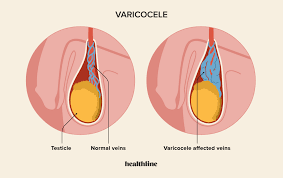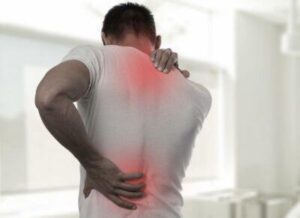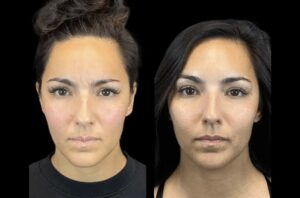
Introduction
Hitting the gym regularly is a great way to stay healthy, boost stamina, and build muscle mass. But for many men, questions arise about whether intense workouts could affect reproductive health—specifically, if there’s a link between gym routines and varicocele. A varicocele is a condition involving the enlargement of veins within the scrotum, and it’s more common than many realize. While it’s not usually life-threatening, it can affect fertility and cause discomfort.
So, can heavy lifting or strenuous exercise actually lead to varicocele? Or is that just a myth? In this detailed guide, we’ll break down what varicocele is, how the gym might be connected, and what men can do to protect their vascular and reproductive health while staying fit.
What Is a Varicocele?
A varicocele is essentially a varicose vein that occurs in the scrotum, often described as feeling like a “bag of worms.” It typically develops on the left side of the scrotum due to the unique anatomical structure of the left testicular vein. Varicoceles are similar to the varicose veins many people get in their legs.
Common Symptoms of Varicocele:
-
A dull or sharp pain in the scrotum, especially after physical activity
-
Testicular swelling or heaviness
-
Visible or palpable enlarged veins
-
Infertility or decreased sperm quality
-
Shrinking of the affected testicle (testicular atrophy)
Varicoceles can range in severity and are classified from Grade I (small, only visible with ultrasound) to Grade III (clearly visible and large).
What Causes Varicocele?
Varicoceles occur due to malfunctioning valves within the veins of the spermatic cord. These valves are supposed to allow blood to flow from the testicles toward the heart, but when they fail, blood pools and causes the veins to enlarge.
Several risk factors may increase the chances of developing a varicocele:
-
Genetics: Family history plays a role.
-
Age: Most common between ages 15-35.
-
Body weight and lifestyle: Obesity and heavy physical strain may contribute.
-
Standing for long periods: Increased venous pressure in the lower body.
Gym Workouts and Varicocele: What’s the Connection?
Myth or Fact: Can Exercise Cause Varicocele?
There’s a lot of misinformation around this. Let’s be clear: Exercise alone does not cause varicocele. However, certain types of workouts—particularly those involving heavy lifting or increased intra-abdominal pressure—can exacerbate an existing varicocele or bring out symptoms in someone who already has a minor, asymptomatic case.
Activities That May Worsen Varicocele:
-
Heavy weightlifting: Increases intra-abdominal pressure, which can affect venous return.
-
Squats and deadlifts (with improper technique): May cause excessive straining.
-
Bodybuilding and powerlifting: Over time, repetitive heavy loads could stress the veins.
-
CrossFit-style training: High-intensity, low-rest workouts may trigger vascular stress.
On the other hand, moderate cardio, stretching, swimming, and yoga are generally safe and may even help improve blood flow.
Scientific Perspective: What Research Says
Studies on the exact link between varicocele and gym workouts are limited, but clinical observations have shown that men involved in high-intensity resistance training may be more prone to vascular strain.
A 2019 clinical review found that high intra-abdominal pressure (from lifting heavy objects or intense exertion) can exacerbate pre-existing venous insufficiencies. This means that if you already have a Grade I varicocele, hitting the gym hard may potentially make it worse.
Moreover, prolonged standing and overtraining without proper recovery can impair venous return, adding to scrotal discomfort or varicocele progression.
How to Work Out Safely with Varicocele
If you’re a fitness enthusiast with varicocele—or you’re concerned about developing one—you don’t have to give up the gym. You just need a smarter approach.
Tips to Stay Safe at the Gym:
-
Avoid Heavy Straining: Limit weights that force you to hold your breath or excessively bear down.
-
Use Proper Breathing Techniques: Exhale on exertion to reduce abdominal pressure.
-
Wear Supportive Gear: Use athletic compression underwear or scrotal support during workouts.
-
Incorporate Rest Days: Avoid overtraining and ensure enough recovery time.
-
Include Cardio and Stretching: Mix in swimming, brisk walking, or yoga for better circulation.
-
Monitor Symptoms: If you notice increased swelling or pain, consult a urologist immediately.
When to See a Doctor
It’s crucial not to ignore symptoms like testicular pain, visible veins, or fertility issues. While many varicoceles are harmless and asymptomatic, others can cause significant discomfort and even impact sperm production.
You should see a doctor if:
-
The pain is persistent or worsening.
-
You notice swelling, asymmetry, or visible veins.
-
You’re trying to conceive and having difficulty.
-
The condition interferes with daily activities or workouts.
Treatment Options for Varicocele
If a varicocele begins to affect your lifestyle or fertility, various treatment options are available. These include:
1. Conservative Treatment
-
Wearing supportive underwear
-
Avoiding activities that trigger symptoms
-
Anti-inflammatory medications (as prescribed)
2. Surgical Options
-
Varicocelectomy: A minimally invasive surgery to remove the affected veins.
-
Varicocele Embolization: A non-surgical procedure that blocks the faulty veins using a catheter and coil.
These treatments have shown success in relieving symptoms and improving sperm quality in many men.
Lifestyle Changes to Support Vein Health
Whether you’re dealing with a varicocele or looking to prevent one, making a few key lifestyle changes can support better vein function:
-
Stay Hydrated: Proper hydration helps maintain blood flow and reduces vascular strain.
-
Eat a Fiber-Rich Diet: Reduces constipation and abdominal pressure.
-
Maintain a Healthy Weight: Extra body weight increases pressure on lower body veins.
-
Avoid Prolonged Standing or Sitting: Move around to keep blood circulating.
-
Don’t Smoke: Smoking harms blood vessels and can contribute to vein disorders.
Common Myths About Varicocele and Exercise
Let’s clear up a few widespread misconceptions:
Myth 1: Only bodybuilders get varicocele.
Truth: While intense lifting may worsen it, varicocele can occur in anyone—even those who don’t exercise.
Myth 2: You must quit the gym if diagnosed.
Truth: With the right adjustments, most men can continue to work out safely.
Myth 3: Exercise cures varicocele.
Truth: Physical activity supports general vascular health but does not eliminate varicocele.
Conclusion
Hitting the gym does not directly cause varicocele, but it can unmask or aggravate symptoms in individuals who are already prone to it. The key lies in awareness, proper technique, and listening to your body. Men don’t have to sacrifice their fitness goals due to this condition. Instead, by modifying workouts, using supportive gear, and seeking medical advice when needed, you can maintain a healthy lifestyle without compromising reproductive or vascular health.
If you suspect you might have a varicocele or are experiencing discomfort while exercising, consult a healthcare provider or a varicose vein specialist to evaluate your condition and explore treatment options.







